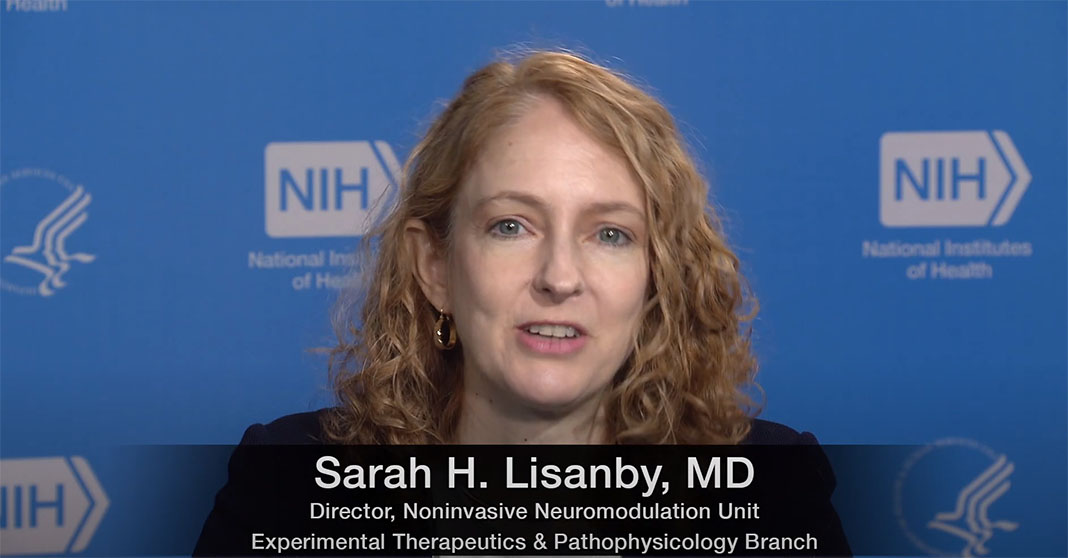Mon, 07/06/2020 - 14:28
By Saydra Wilson, MD

A brief introductory video by Dr. Sarah Lisanby welcomes viewers to a video lecture series now published on the National Institute of Mental Health (NIMH) YouTube page. The five videos, taking about four hours to complete, are meant to be a part of basic training for those planning to utilize rTMS in clinical and research settings in addition to readings and hands-on-training.
Our more seasoned members may prefer to skip ahead to the later videos of the series. The final two videos in the playlist are titled “Physics, Devices and Modeling” and “Cortical Anatomy and Physiology” respectively. As a consumer of Dr. Zhi-De Deng’s coil shape and electromagnetic field modeling foundational TMS paper, it was exciting for me to watch him review the physics of TMS starting with Faraday’s law. Though this topic is a review for most active TMS providers, this is a reasonable starting point for people who may be considering training as a TMS technician. Dr. Deng does walk through his famous coil shape figures and the changes in focality and depth afforded by commonly utilized coil shapes. This is the shortest of the videos, but researchers may be the primary target for the later half of the video. The fourth and final video is more targeted toward researchers or people who are consuming TMS research to help understand motor evoked potentials, spinal stimulation and how conduction times are measured.
Consider watching the second video because a little review never hurt anyone. The second video focuses on the safety of TMS and does a nice review of the foundational studies and the adverse events observed, comparing them to the adverse events observed in the sham groups. The discussion ranges over cognitive effects, headaches, pain, and seizure risks. A very organized breakdown of patient specific factors to be assessed for the safe performance of TMS is an essential discussion for those who are new practitioners. Many patients are just discovering TMS so safety questions and concerns are very common in my patient encounters. This video is very accessible and may be a reasonable place to direct patients when they are considering their treatment options. It can be a useful tool in helping set patient expectations without focusing on anecdotes. The only potential drawback in adopting this as an additional patient resource, is that the video is over one hour in length.
The third video is titled “Physical Parameters and Protocols”. This lecture does go beyond the basics of pulse characteristics, trains, intertrain intervals, location, and intensity. After a discussion of spatial parameters, the speaker keeps things interesting with a brief review of data from a 2009 article from the Journal of Clinical Neuroscience by Sack et al that illustrates with a power analysis how much individualized targeting with fMRI allows for increased likelihood of detecting TMS effects in a smaller population compared to the amount of subjects that would be needed to detect the TMS effect if the targeting was only performed by scalp measurements. This lecture is less patient friendly and may be more targeted towards aspiring TMS researchers, treatment providers and other consumers of TMS research. Bruce Luber Phd, a staff scientist with NIMH takes you on a well curated tour of all the modifiable aspects of a treatment or research protocol with examples, clear figures, and a solid summary to solidify the knowledge. This video helps you recognize the range of questions TMS may be utilized to help answer including mapping as well as modulatory potential. Though the video does top off at a little over one hour, finish watching until the end for some interesting studies on working memory enhancement!
Overall the NIMH’s so-called “basic” course material has accessible and interesting content that is clearly presented for people across the spectrum of TMS experience. Patients, a new prescriber, technicians, and researchers will find some section accessible and informative. Please join me in driving up the views of the NIMH Youtube channel to encourage continued well-made content for life-long learning.
YouTube link: https://www.youtube.com/playlist?list=PLV9WJDAawyhbWUi4oWmGAEwE2mWE9S9y0
Disclaimer: This article represents the individual opinion and work of the author not the CTMSS.